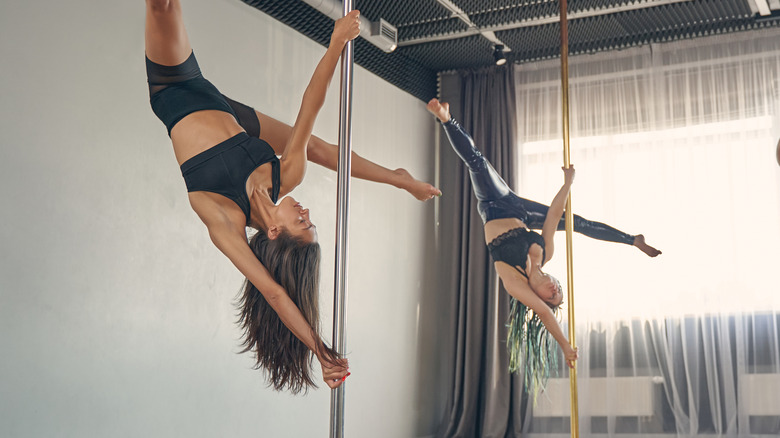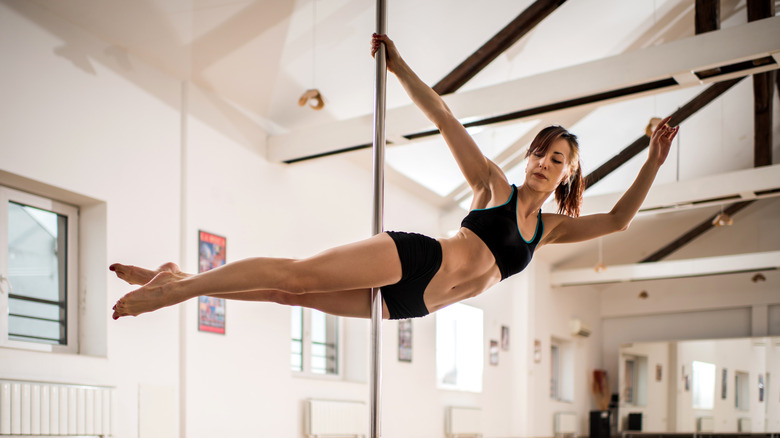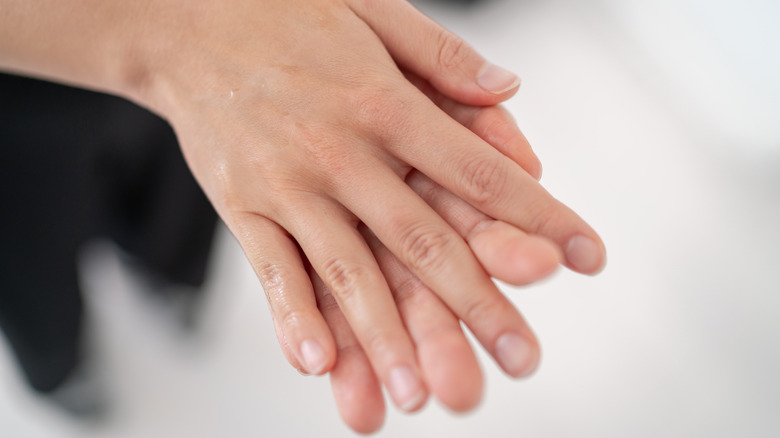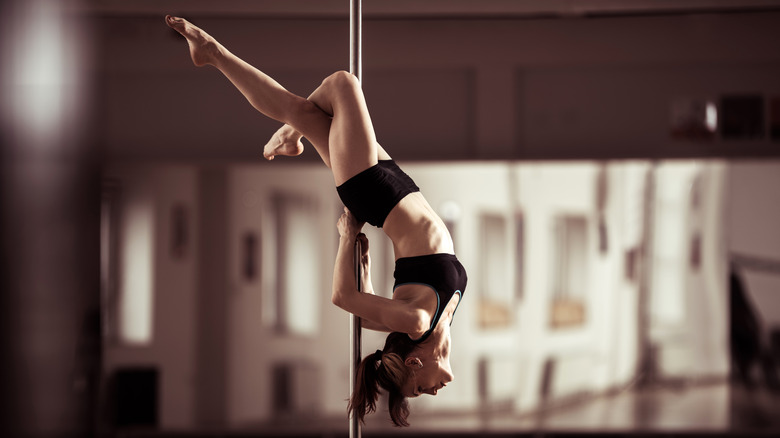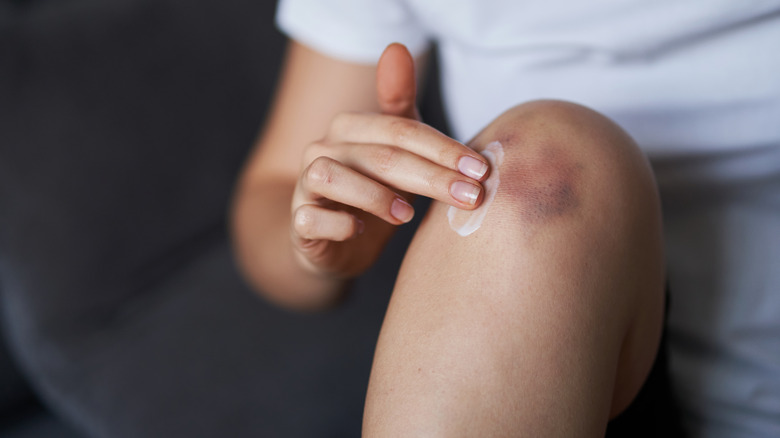What To Know Before Your First Pole Dancing Fitness Class
There's certainly no shortage of fitness classes available, from aerobics and yoga to spin, Orangetheory, SPENGA, Pilates, barre, and Eat the Frog. It seems there are at least one or two studios every few miles away in every major city. While many fitness classes are similar to each other, some stand in their own category, like pole dancing.
For beginners, pole dancing can be quite challenging. It's not like cardio-based classes where you can go at your own pace. Pole dancing is all about strength. Although many professional pole dancers make every move look effortless and every transition from one position to the next seamless, the quivering of muscles tells a different story.
If you've been curious about taking a pole dancing class but are unsure if you're ready, this guide can help you prepare. There are many factors to consider that can help you attend your first class with confidence and prevent you from being caught off guard.
Dress appropriately
A key component of pole dancing is the ability to grip the pole with different parts of your body, such as your hands, feet, legs, and arms. To maintain a good grip on the pole, it's best to have bare skin, so wearing the right clothing to class is important. A pair of shorts and a tank top are usually great choices. Fitted clothing like spandex is also recommended by Lupit Pole to allow your body to move more freely without the restrictions of other materials or loose-fitting garments.
As for shoes, most cardio-based fitness classes require cross-training or running shoes to complete the exercises comfortably and safely. But pole dancing is in a different category. Depending on your reasons for learning pole dancing (fitness, fun, profession, or a mix of all three), you may not need to wear any shoes at all, as explained by Your Pole Pal. For other types of pole dancing classes, you may prefer a pair of tall stilettos. Research the studio and speak with the instructor ahead of time to ensure that you have the right footwear.
Don't wear lotion, and consider using a grip aid
Emma Nassuada Ayres, a contributor and pole dancer on Medium, shared her experience with her very first pole dance class, including what she considered to be a major mistake. She wore lotion, which she later regretted. "As you sweat, the moisturizer will leech out and prevent you from gripping," she said. She added that the slippiness can also increase the risk of injury. Learning how to pole dance is challenging and dangerous enough without the added challenge of lotion, so it's best to avoid applying any less than 24 hours before class.
On the other hand, if your hands get super sweaty and feel slippery without using any type of moisturizer, or if they're too dry, you might benefit from a grip aid, like the ones sold at Pole Junkie. These products are designed to either add the appropriate amount of moisture to your hands or to absorb or reduce hand sweat, with the ultimate goal of improving your grip.
Be prepared for full-body muscle activation
Pole dancing is a strength-training exercise that engages multiple muscle groups. The human flagpole, a popular move at acrobatic circuses like Cirque du Soleil, is a great example of this. It involves holding the top portion of the pole with one hand and the bottom portion with the other hand while raising your body above and parallel to the ground. The core and upper body strength required for this move is incredible!
Pole dancing classes teach similar moves, although you may not learn them in your very first class. At first, you'll focus on learning how to grip the pole and move your body around it. Pole dancing primarily engages your core and upper body strength, as explained by Body Building. Be prepared to use your abs, obliques, back, arms, and shoulders, as well as your hamstrings, glutes, and quads. If you lack strength in any of these areas, you may struggle at first. However, with time and strength training outside of class, such as with free weights, you'll only get stronger and better at your pole dancing classes.
Expect falls and injuries
As any experienced pole dancer will tell you, pole fitness is not easy to learn, and there are a number of things that can go wrong during your first class. Krystle Celis, a certified athletic trainer and pole dancer, shared eight of the most common injuries related to pole dancing in her blog. Although carpal tunnel syndrome and rotator cuff tendonitis are not typically a concern after just one class, other injuries could occur.
What types of injuries should you plan for? For one, you will probably fall a few times, so be prepared for bruises. You might also experience skin burns during your first pole dancing class, but these types of wounds usually do not require a doctor's visit. Other potential injuries during your first class include muscle strains, especially if you do not stretch beforehand or if you come to class with muscle tightness from a previous workout.
Pole dancing can be a great workout that helps you build muscle, gain flexibility, and improve coordination, but it can also be dangerous. However, if you dress properly, know what to expect from your body, and take steps to improve your grip strength, you can lower the risk of injuries and falls and focus more on having fun!
